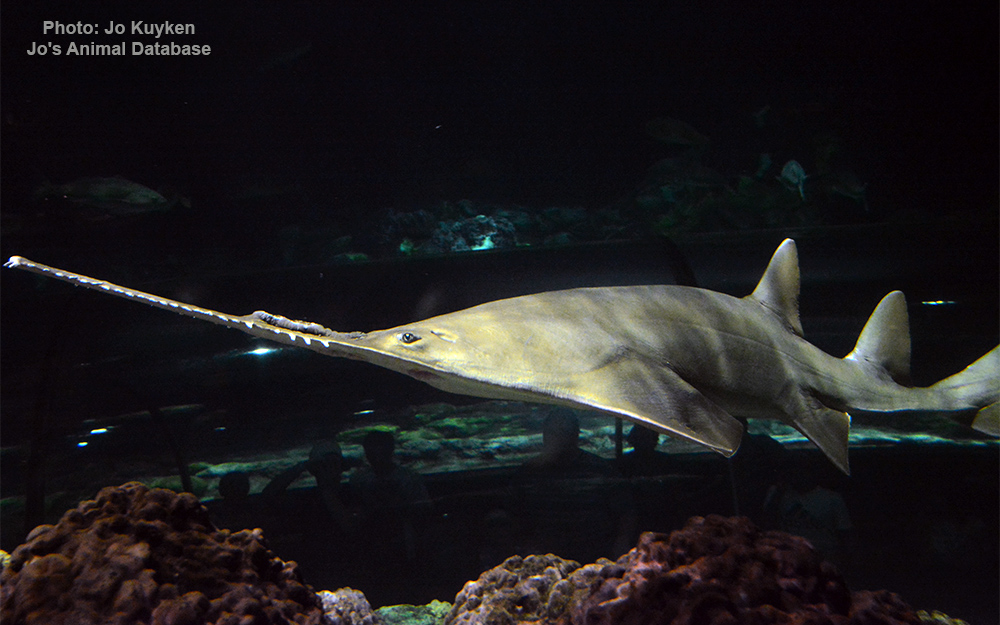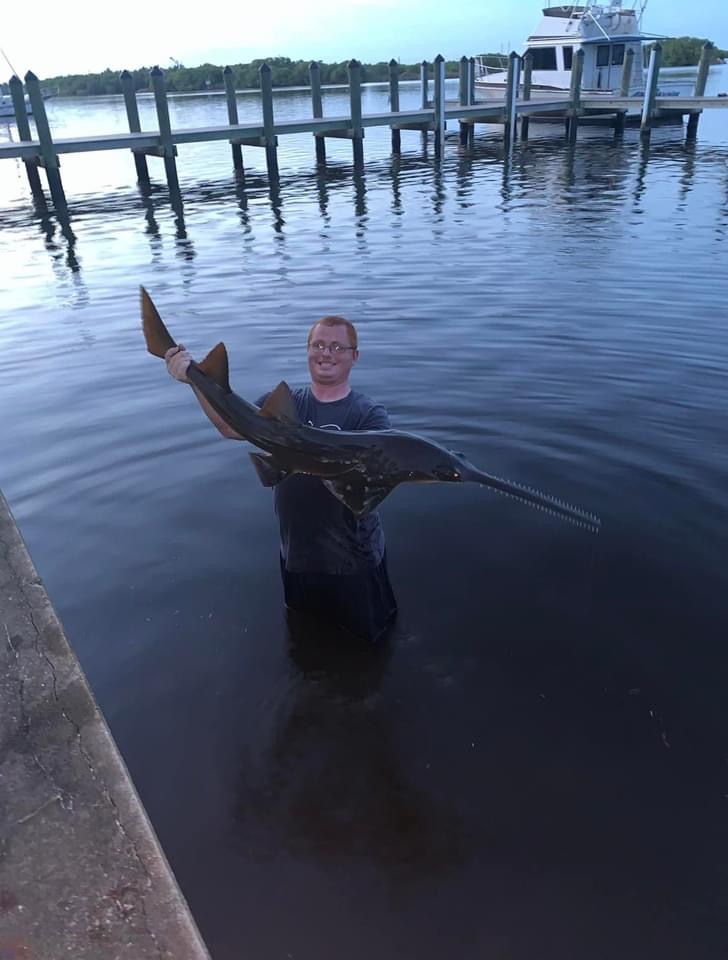Smalltooth sawfish
(Pristis pectinata)

Image source: Jo's Animal Database
Classification
General data
The smalltooth sawfish (Pristis pectinata) is a species of sawfish in the family Pristidae. It is found in shallow tropical and subtropical waters in coastal and estuarine parts of the Atlantic. Reports from elsewhere are now believed to be misidentifications of other species of sawfish. It is a critically endangered species that has disappeared from much of its historical range.
The smalltooth sawfish is found in tropical and subtropical parts of the Atlantic, including the Caribbean and Gulf of Mexico. Its original range was the smallest of the sawfish species, covering about 2,100,000 km2 (810,000 sq mi).
In the west it once ranged from the United States to Uruguay and in the east from Senegal to Angola.
Today it has disappeared from much of its historical range. There are old reports from the Mediterranean Sea, but this likely involved vagrants and according to the FAO the species can be considered locally extinct in the Mediterranean Sea.
Smalltooth sawfish are mostly found in coastal marine and estuarine brackish waters. It prefers water less than 8 m (26 ft) deep, but adults are occasionally seen offshore at depths of up to 122 m (400 ft). During periods with increased salinity, juveniles have been seen far up rivers. This species is mostly found in places with soft bottoms such as mud or sand, but may also occur over hard rocky bottoms or at coral reefs. They are often found in areas with mangrove or seagrass. The lower water temperature limit is 16–18 °C (61–64 °F).
The smalltooth sawfish reputedly reaches a total length of up to 7.6 m (25 ft), but this is likely an exaggeration and the largest confirmed size is 5.54 m (18.2 ft). It weighs up to 350 kg (770 lb).
Its upperparts are brownish-gray, gray, bluish-gray or blackish, and the underparts are whitish.
Unlike the largetooth sawfish (P. pristis), the only other sawfish in the Atlantic, the smalltooth sawfish has a leading edge of the dorsal fin that is placed roughly above the leading edge of the pelvic fins (when the sawfish is seen from above or the side), relatively short pectoral fins and lack of a distinct lower lobe to the tail (lower lobe very small or absent).
It can be separated from the more similar dwarf sawfish (P. clavata) and green sawfish (P. zijsron) by the distribution (both are only found in the Indo-Pacific) and the dorsal fin (its leading edge is placed slightly or clearly behind the leading edge of the pelvic fins in the dwarf and green sawfish). The smalltooth sawfish has a relatively narrow rostrum (saw) with 20–32 teeth on each side.











